Do you have a question about the Cessna 172N Skyhawk and is the answer not in the manual?
Details maximum gross weight and taxi fuel burn specifications for the aircraft.
Lists critical airspeeds for takeoff, climb, cruise, and maneuvering, including Vso, Vs1, Vfe, Vno, Vne, Vx, Vy, Va, and X-Wind.
Outlines steps for leaning the mixture, including Lean Assist, initial mixture level, and final mixture adjustment.
Procedure for starting a flooded engine, addressing fuel/air mixture imbalance.
Procedure for starting with fouled spark plugs, caused by rich mixtures or carbon deposits.
Steps for a standard takeoff, including flap settings, rotation speed, and climb out parameters.
Procedure for taking off from soft or rough runways to minimize drag and maximize climb performance.
Procedure for takeoff from short or restricted runways, emphasizing precise performance for steep climb.
Pre-maneuver checklist to ensure the aircraft is safely prepared and clear of other traffic.
Simulates low airspeed and high angle of attack conditions to assess stall warnings and control feel.
Tests pilot smoothness and coordination in 360-degree turns banked at 45-60 degrees.
Develops awareness for corrective responses to high pitch attitudes during takeoff/climb that induce stalls.
Develops awareness for corrective responses to improper control inputs during a turn simulating landing.
Stalls occurring at higher indicated airspeeds due to increased load factor from abrupt control inputs.
Rapidly dissipates altitude while remaining over a selected landing spot during emergencies.
A maximum performance climbing turn finishing 180 degrees, aiming to gain maximum altitude.
Enhances flight control coordination across a wide range of airspeeds and attitudes.
Maneuver to understand relationship between flight controls and attitude changes, requiring coordination.
Maneuver focused on maintaining constant radius by changing bank angle, assessing wind effects.
Maneuver to establish adequate wind correction angles during turns.
Maneuver to calculate pivotal altitude and understand reference line movement relative to wind.
Procedure for landing on standard runways, detailing approach speeds and flap settings.
Procedure for landing on soft or rough surfaces, emphasizing wing support and backpressure.
Procedure for landing on short runways, requiring precise control for shortest stopping distance.
Approach executed without power to a preselected landing spot, instilling judgment for no-power flight.
Procedure for aborting a landing when conditions cannot be assured, emphasizing early initiation.
Steps for outbound procedure turn to intercept the final approach course.
Steps for the final approach, including airspeed, pitch, and trim adjustments.
Procedure for reaching decision altitude and leveling off, with criteria for continuing or executing a missed approach.
Procedure to follow when the landing criteria are not met at the missed approach point.
Immediate actions for emergencies: Airspeed, Best Place to Land, Checklist, Declare Emergency.
Procedure to follow if an engine fire occurs during the starting sequence.
Actions for engine power loss during takeoff, with considerations for runway length and altitude.
Procedure for engine power loss while in flight, including airspeed and checklist items.
Steps for executing a landing when engine power is not restored, focusing on airspeed and pattern.
Procedure to follow if an engine fire occurs during flight.
Procedure for rapidly descending altitude due to emergencies like fire, sickness, or depressurization.
Actions to take when engine roughness is detected, including carburetor heat and mixture adjustments.
Details maximum gross weight and taxi fuel burn specifications for the aircraft.
Lists critical airspeeds for takeoff, climb, cruise, and maneuvering, including Vso, Vs1, Vfe, Vno, Vne, Vx, Vy, Va, and X-Wind.
Outlines steps for leaning the mixture, including Lean Assist, initial mixture level, and final mixture adjustment.
Procedure for starting a flooded engine, addressing fuel/air mixture imbalance.
Procedure for starting with fouled spark plugs, caused by rich mixtures or carbon deposits.
Steps for a standard takeoff, including flap settings, rotation speed, and climb out parameters.
Procedure for taking off from soft or rough runways to minimize drag and maximize climb performance.
Procedure for takeoff from short or restricted runways, emphasizing precise performance for steep climb.
Pre-maneuver checklist to ensure the aircraft is safely prepared and clear of other traffic.
Simulates low airspeed and high angle of attack conditions to assess stall warnings and control feel.
Tests pilot smoothness and coordination in 360-degree turns banked at 45-60 degrees.
Develops awareness for corrective responses to high pitch attitudes during takeoff/climb that induce stalls.
Develops awareness for corrective responses to improper control inputs during a turn simulating landing.
Stalls occurring at higher indicated airspeeds due to increased load factor from abrupt control inputs.
Rapidly dissipates altitude while remaining over a selected landing spot during emergencies.
A maximum performance climbing turn finishing 180 degrees, aiming to gain maximum altitude.
Enhances flight control coordination across a wide range of airspeeds and attitudes.
Maneuver to understand relationship between flight controls and attitude changes, requiring coordination.
Maneuver focused on maintaining constant radius by changing bank angle, assessing wind effects.
Maneuver to establish adequate wind correction angles during turns.
Maneuver to calculate pivotal altitude and understand reference line movement relative to wind.
Procedure for landing on standard runways, detailing approach speeds and flap settings.
Procedure for landing on soft or rough surfaces, emphasizing wing support and backpressure.
Procedure for landing on short runways, requiring precise control for shortest stopping distance.
Approach executed without power to a preselected landing spot, instilling judgment for no-power flight.
Procedure for aborting a landing when conditions cannot be assured, emphasizing early initiation.
Steps for outbound procedure turn to intercept the final approach course.
Steps for the final approach, including airspeed, pitch, and trim adjustments.
Procedure for reaching decision altitude and leveling off, with criteria for continuing or executing a missed approach.
Procedure to follow when the landing criteria are not met at the missed approach point.
Immediate actions for emergencies: Airspeed, Best Place to Land, Checklist, Declare Emergency.
Procedure to follow if an engine fire occurs during the starting sequence.
Actions for engine power loss during takeoff, with considerations for runway length and altitude.
Procedure for engine power loss while in flight, including airspeed and checklist items.
Steps for executing a landing when engine power is not restored, focusing on airspeed and pattern.
Procedure to follow if an engine fire occurs during flight.
Procedure for rapidly descending altitude due to emergencies like fire, sickness, or depressurization.
Actions to take when engine roughness is detected, including carburetor heat and mixture adjustments.
| Manufacturer | Cessna |
|---|---|
| Model | 172N Skyhawk |
| Engine | Lycoming O-320-H2AD |
| Horsepower | 160 hp |
| Seating Capacity | 4 |
| Type | Single-engine aircraft |
| Wingspan | 36 ft 1 in |
| Length | 27 ft 2 in |
| Height | 8 ft 11 in |
| Max Takeoff Weight | 2, 450 lb (1, 111 kg) |
| Cruise Speed | 120 knots |
| Stall Speed | 47 knots |
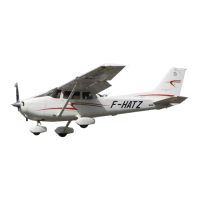




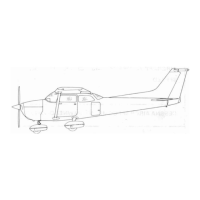
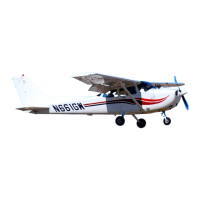
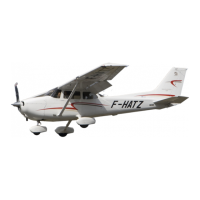
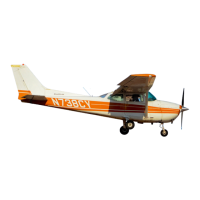


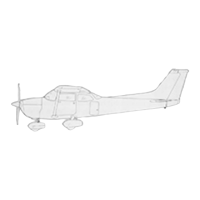
